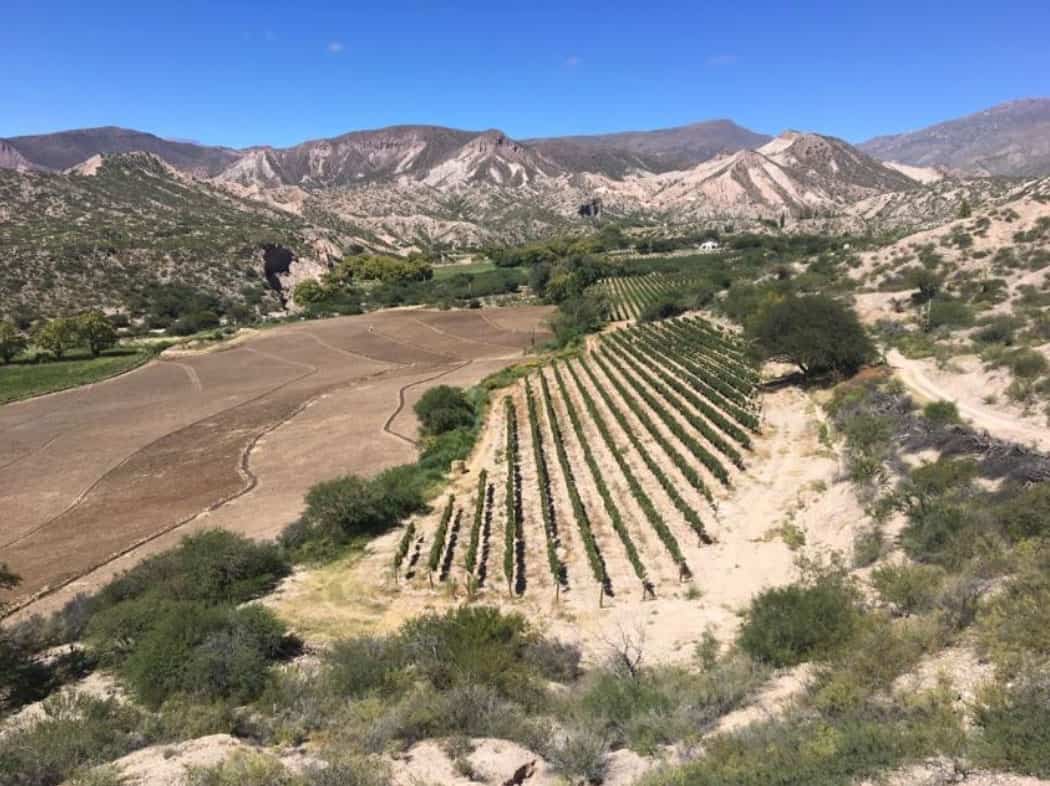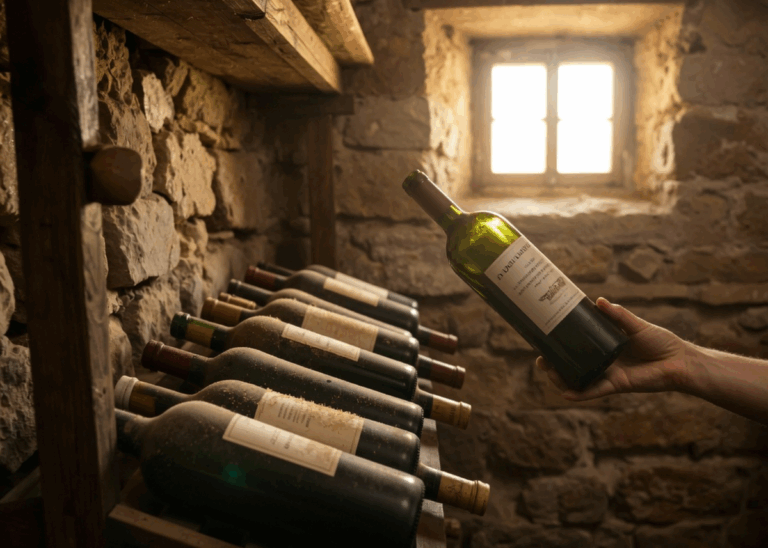[et_pb_section fb_built=”1″ _builder_version=”3.22″ global_colors_info=”{}”][et_pb_row _builder_version=”3.25″ global_colors_info=”{}”][et_pb_column type=”4_4″ _builder_version=”3.25″ custom_padding=”|||” global_colors_info=”{}” custom_padding__hover=”|||”][et_pb_text _builder_version=”3.27.4″ global_colors_info=”{}”]
Calchaqui Valley, Argentina (9,000 feet above sea level)
Here in northwestern Argentina, the poplar trees are turning yellow. It’s the end of summer (we’re in the southern hemisphere), which means the local children must soon descend from their small, isolated family homesteads (called
Bad news for them, perhaps, but great news for wine lovers. The grape harvest – here known as la
Picking the grapes by hand at the small Bonner family vineyard of Pucarilla, one of the highest in the
[/et_pb_text][et_pb_image src=”https://bonnerprivatewines.com/wp-content/uploads/2019/03/Pucarilla.jpg” align_tablet=”center” align_phone=”” align_last_edited=”on|desktop” _builder_version=”3.23″ global_colors_info=”{}”]
[/et_pb_image][et_pb_text _builder_version=”3.27.4″ global_colors_info=”{}”]
The small vineyard at Pucarilla
[/et_pb_text][et_pb_text _builder_version=”3.27.4″ global_colors_info=”{}”]
It’s grueling work, even when the bees aren’t attacking you. So far, the rudimentary bee-traps – plastic water bottles with fruit at the bottom – seem to be effective. Down south in the small wine town of Cafayate, a good picker will fill 50 small tubs in a day. Here the number will be around 25, mostly due to the fact that the cowboys picking the grapes spend 11 months out of 12 chasing down stray cattle, goats, or sheep.
Still, we could have it worse – at least we have grapes to harvest! When it comes to high altitude vineyards, there’s a point of diminishing returns. The one or two vineyards higher than ours (note: exact altitude, like the quality of one’s BBQ in West Texas, is a fiercely contested matter here), are prone to freezing over or being destroyed by hail. Entire vintages get wiped out this way.
A
[/et_pb_text][et_pb_image src=”https://bonnerprivatewines.com/wp-content/uploads/2019/03/Fermentation-Vats.jpg” align_tablet=”center” align_phone=”” align_last_edited=”on|desktop” _builder_version=”3.23″ max_width=”35%” module_alignment=”center” global_colors_info=”{}”]
[/et_pb_image][et_pb_text _builder_version=”3.27.4″ global_colors_info=”{}”]
Fermentation vats
[/et_pb_text][et_pb_text _builder_version=”3.27.4″ global_colors_info=”{}”]
There will be no whites bottled at this time. The harvest for
After the initial fermentation, some of the juice will be ready to age in-bottle (generally the single vineyard wines like Tacana) while others may be aged in oak barrels from France (as is the case for Sunal) anywhere from 12 to 24 months. Oak barrels can be reused for up to eleven years, with the older barrels, from which most of the oakiness has been sapped, generally reserved for
[/et_pb_text][et_pb_image src=”https://bonnerprivatewines.com/wp-content/uploads/2019/03/Oak-Barrels.jpg” align_tablet=”center” align_phone=”” align_last_edited=”on|desktop” _builder_version=”3.23″ max_width=”64%” module_alignment=”center” global_colors_info=”{}”]
[/et_pb_image][et_pb_text _builder_version=”3.27.4″ global_colors_info=”{}”]
Oak barrels
[/et_pb_text][et_pb_text _builder_version=”3.27.4″ global_colors_info=”{}”]
Sadly, we won’t be around to see bottling day. In just a few days we are leaving Argentina for Verona, Italy, where Barry and Diego have already reconnoitered some prospective bottles for our second quarterly collection. We’ll send you an update once we put boots on the ground.
[/et_pb_text][et_pb_image src=”https://bonnerprivatewines.com/wp-content/uploads/2019/03/Vineyards.jpg” align_tablet=”center” align_phone=”” align_last_edited=”on|desktop” _builder_version=”3.23″ max_width=”69%” module_alignment=”center” global_colors_info=”{}”]
[/et_pb_image][et_pb_text _builder_version=”3.27.4″ global_colors_info=”{}”]
In the meantime, please enjoy your first weekly wine tasting with Julien. Simply click on the video and you’ll be taken to our website where you can watch it in full (as well as access your other content if you wish).
Hasta pronto…
[/et_pb_text][et_pb_video src=”https://www.youtube.com/watch?v=HHuurAi9Asg&feature=youtu.be” _builder_version=”3.21″ global_colors_info=”{}”]
[/et_pb_video][/et_pb_column][/et_pb_row][/et_pb_section]



